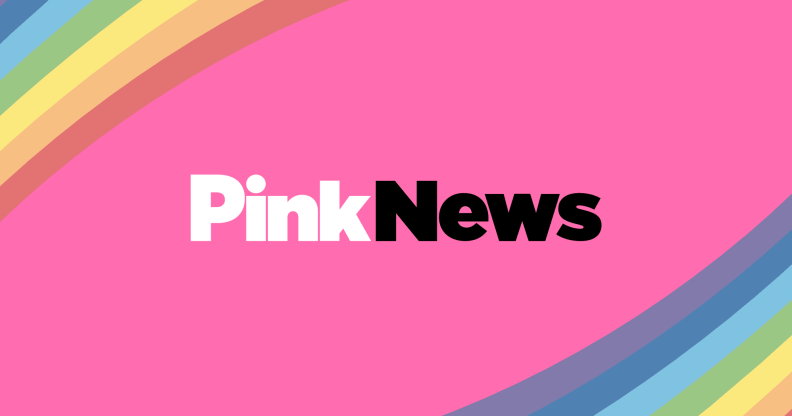Comment: The Gay Liberation Front’s social revolution

On October 13th 1970, the Gay Liberation Front was founded in Britain. It was a modest beginning, with 19 people meeting in a basement in the London School of Economics. But it grew rapidly and proved to be a defining, watershed moment in British queer history. From 1970 onwards, thanks to GLF, the lesbian, gay, bisexual and transgender (LGBT) mindset changed forever, from victims to victors.
I was an activist in the GLF, aged 19 with long curly hair and living in Shepherd’s Bush with my 16-year old boyfriend, Peter Smith. I was student. He was a budding jazz guitarist. The age of consent for gay relationships was, at the time, 21. Our love was criminal and we were both at risk of imprisonment. We didn’t give a damn. We despised and defied the law.
GLF was a glorious, enthusiastic and often chaotic mix of anarchists, hippies, left-wingers, feminists, liberals and counter-culturalists. Despite our differences, we shared a radical idealism – a dream of what the world could and should be – free from not just homophobia but the whole sex-shame culture, which oppressed straights as much as LGBTs. We were sexual liberationists and social revolutionaries, out to turn the world upside down.
GLF espoused a non-violent revolution in cultural values and attitudes. It questioned marriage, the nuclear family, monogamy and patriarchy – as well as the wars in Vietnam and Ireland. Although against homophobic discrimination, GLF’s main aim was never equality within the status quo. We saw society as fundamentally unjust and sought to change it, to end the oppression of LGBTs – and of everyone else.
GLF aligned itself with the movements for women’s, black, Irish, working class and colonial freedom. We marched for troops out of Ireland and against the anti-union Industrial Relations Act. Although critical of the “straight left” and often condemned by them, most of us saw ourselves as part of the broad anti-capitalist, anti-imperialist movement, striving for the emancipation of all humankind.
Our idealistic vision involved creating a new sexual democracy, without homophobia, misogyny, racism and class privilege. Erotic shame and guilt would be banished. There would be sexual freedom and human rights for everyone – gay, bi and straight. Our message was “innovate, don’t assimilate.”
GLF’s critique of straight society amounted to more than condemning violations of gay civil rights and campaigning for equal treatment. Revolutionary not reformist, our goal was an end to “male chauvinism” and the “gender system”.
We saw queer oppression as a consequence, at least in part, of the way many LGBT people deviated from the socially-prescribed gender roles of traditional masculinity and femininity. According to the orthodoxy of millennia, men were expected to act masculine and desire women. Women were supposed to be feminine and be attracted to men.
We queers subverted this conventional gender system. Gay men love other men and many of us are deemed inadequately macho. Lesbians love other women and tend to be less passive and dependent on men than most of their heterosexual sisters. Queer males don’t have to sexually subjugate women and female queers have no need for men to fulfil their erotic and emotional needs.
This is a part of the reason why we’ve been persecuted for centuries. Our nonconformity threatened the gender system which has, historically, sustained the social hegemony of male heterosexuality and misogyny.
GLF positively celebrated queer deviance. We said the right to be gay includes the right to disobey straight gender norms. We singled out macho heterosexual masculinity, with its long tradition of domination and aggression, as the main oppressor of LGBTs and women. While not condemning all straight men, we saw sexist, homophobic straight males as a major roadblock to women’s and gay liberation. This is why GLF allied with the women’s liberation movement.
The “radical drag” and ”gender-bender” politics of GLF glorified male gentleness and gender role subversion. It was a conscious, if sometimes exaggerated, attempt to renounce the oppressiveness and privilege of orthodox masculinity and to undermine the way it functioned to buttress the subordination of women and gay men.
The dissolution of straight male machismo was, we argued, the key to ending LGBT and female oppression. True human liberation could only be achieved by breaking down the rigidity of the gender system and ending its tyranny. This transformation was necessary to allow gender-variant people – both gay and straight – to live their lives freely, without stigma or shame.
In contrast to the gay law reform movement, GLF’s strategy for queer emancipation was to change society’s values and norms, rather than adapt to them. We sought a cultural revolution to overturn centuries of male heterosexual domination and thereby free both queers and women.
Forty years on, GLF’s gender agenda has been partly won. Male and female roles are, today, less prescribed and inflexible than in 1970. There’s greater fluidity and gender variance is more accepted. Butch women and fem men – whether homo or hetero – are still rarely social icons but they are also less likely to be demonised and outcast. Girlish boys and boyish girls don’t get victimised as much as in times past. LGBT kids often now come out at the age of 12 or 14. While many are bullied, many others are not. The acceptance of sexual and gender diversity is increasing. The women and men of GLF trail-blazed a social revolution. Bravo!
This article was first published on the Guardian’s Comment Is Free site.

